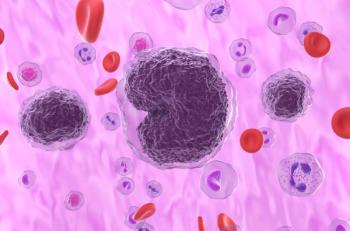
Fever, Neutropenia Are Most Common Causes for Hospitalization of Children With Cancer
Among pediatric patients with cancer, fever and neutropenia continue to be a common and potentially life-threatening complication of chemotherapy.
Children with cancer are hospitalized more because of fever and neutropenia (FN), a new study
Among pediatric patients with cancer, FN continues to be a common and potentially life-threatening complication of chemotherapy, which requires immediate evaluation and hospitalization. The study, by Emily L. Mueller, MSc; James Croop, PhD; and Aaron E Carroll, MS, aimed to understand the hospitalization data across United States in 2012 for children with cancer diagnosed with FN. The pattern provides insight into the implementation of alternative management practices for FN among children with cancer.
Findings for Pediatric FN Cases
The study used pediatric discharges data from the 2012 Kids’ Inpatient Database (KID). This data was compared against the original data from the 2009 KID.
KID is a nationally representative database. It samples 80% of pediatric discharges and 10% of uncomplicated births from all hospitals. The database helps in detecting and evaluating rare conditions among hospitalized children. It provides data elements such as length of stay (LOS), patient demographic characteristics, and hospital charges per episode of care.
The observations were as follows:
- The majority of patients with FN discharges were between ages 0 and 9. This was higher than the proportion of overall pediatric cancer discharges for patients in the same age range.
- Most FN discharges were male and non-Hispanic white race.
- Most FN patients had insurance coverage (private insurance more than public).
- The average LOS for FN discharges was 7.5 days. But 39% of discharges had a short length of stay (SLOS).
- The mean hospital charge was $65,536 for FN discharges among pediatric patients with cancer. The total charges were nearly $881 million.
- SLOS discharges accounted for $91.2 million.
Financial Implications of Pediatric FN Hospitalizations
In general, in both 2009 and 2012, about 1 of every 5 pediatric cancer-associated hospital discharges were related to FN. The financial implications were even more terrifying. Among FN discharges in both years, even though two-fifths had a short LOS, the hospital charges were phenomenal. The hospital charges went from $65.5 million in 2009 to $91.2 million in 2012.
“SLOS admissions continue to be rarely associated with serious infections, but contribute substantially to the burden of hospitalization for pediatric FN,” the study notes. Hence, it is imperative to implement risk stratification schemas to simplify identifying patients who meet low-risk criteria. This may help in decreasing financial burden.
The study demonstrates that the impact of FN discharges among pediatric patients with cancer on healthcare utilization has continued to climb. Evaluation of this impact could lead to improved insight into both hospital- and patient-level factors that impact length of stay.
Newsletter
Stay ahead of policy, cost, and value—subscribe to AJMC for expert insights at the intersection of clinical care and health economics.













































